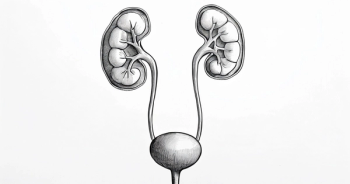
Darolutamide Improves Quality of Life in Metastatic Prostate Cancer
Darolutamide significantly delayed pain progression and improved overall well-being in patients with metastatic hormone-sensitive prostate cancer.
Darolutamide (Nubeqa) plus androgen deprivation therapy (ADT) demonstrated positive impacts on health-related quality of life (HRQoL) in patients with metastatic hormone-sensitive prostate cancer (mHSPC), including clinically meaningful delays in pain progression, when compared with placebo and ADT, according to data from patient-reported outcomes of the phase 3 ARANOTE trial (NCT04736199) presented at the
“[This] is the first and only androgen receptor antagonist to demonstrate clinically meaningful delays in pain progression and overall well-being, including those specific areas of social and family well-being, functional well-being, and urinary symptoms. Health-related quality of life benefits may be greatest in patients treated with darolutamide who had ultralow [prostate-specific antigen (PSA)] levels,” said Alicia Morgans, MD, MPH, genitourinary medical oncologist and director of the Survivorship Program at Dana-Farber Cancer Center and associate professor of medicine at Harvard Medical School, in a presentation of the study.
In this analysis, multiple patient-reported outcome measures were used to assess patient experience during treatment. They included the Brief Pain Inventory Short Form (BPI-SF), used to assess pain, specifically the worst pain in the past 24 hours, and the Functional Assessment of Cancer Therapy-Prostate (FACT-P) total score, a questionnaire evaluating overall quality of life in patients with prostate cancer. The FACT-P includes domains such as physical well-being, social and family well-being, emotional well-being, functional well-being, and prostate cancer-specific assessments, including bowel and urinary difficulties.
The analysis showed that darolutamide was associated with a delay in pain progression, defined as the time from randomization to a confirmed increase of at least 2 points in worst pain over the nadir or the initiation of opioid treatment for at least 7 days, vs placebo, with a stratified hazard ratio (HR) of 0.72 (95% CI, 0.54-0.96). When assessing time to pain progression by PSA response, patients who reached a PSA of less than 0.02 or 0.2 ng/mL at any time had a longer time to pain progression than patients with a PSA greater than or equal to 0.2 ng/mL.
“I think this is a critical thing for us to recognize that our patients’ quality of life, intuitively, of course, is associated with disease control. But this is also helpful for us in clinical practice so that we can encourage patients as their cancer appears to be better controlled; we expect them to feel better,” Morgans explained during the presentation.
Regarding time to FACT-P deterioration, darolutamide was associated with an extension in median time to deterioration, defined as the first decrease of 10 or more points in the total score, by 5.1 months vs placebo (HR, 0.76; 95% CI, 0.61-0.94). Improvements were most prominent in the areas of social and family well-being, functional well-being, and prostate cancer concerns, including urinary symptoms. Similarly with the BPI-SF, patients with a PSA of 0.02 or 0.2 ng/mL at any time had a longer time to HRQoL deterioration vs a PSA of 0.2 ng/mL or greater.
About the ARANOTE Trial
The phase 3 ARANOTE trial assessed darolutamide plus ADT vs placebo and ADT for the treatment of mHSPC. Findings from the study presented at the
A total of 669 patients enrolled globally were randomly assigned on a 2:1 basis to receive darolutamide 600 mg twice daily plus ADT (n = 446) or placebo plus ADT (n = 223). The primary end point was radiographic progression-free survival (rPFS) by central blinded review, with secondary end points including overall survival, time to PSA progression, and safety.
At a data cutoff of June 7, 2024, the median follow-up was 25.3 months for the darolutamide group and 25.0 months for the placebo group. The median rPFS for darolutamide plus ADT was not reached (95% CI, not reached-not reached [NR]) compared with 25.0 months for placebo plus ADT (95% CI, 19.0-NR). At 24 months, the rate of rPFS was 70.3% for the darolutamide group vs 52.1% for the placebo group.
The median treatment duration was 24.2 months in the darolutamide group compared with 17.3 months for the placebo group. Incidence of treatment-emergent adverse events (TEAEs) was similar between the arms, with 91.0% any-grade and 30.8% grade 3 or 4 TEAEs with darolutamide plus ADT and 90.0% any-grade and 30.3% grade 3 or 4 with ADT plus placebo.









































